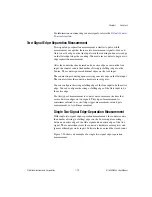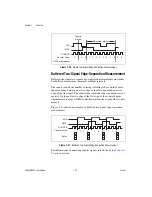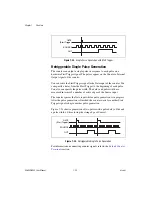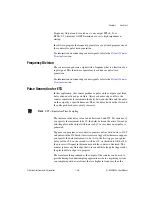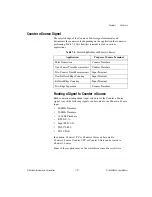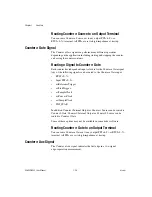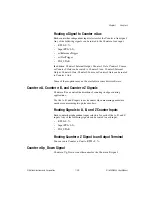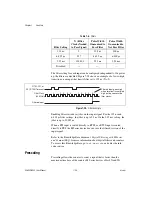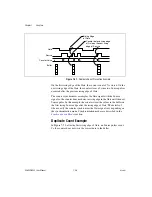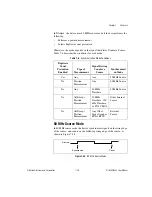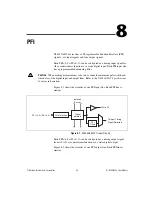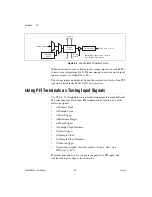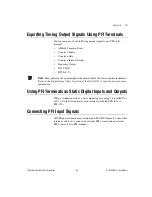
Chapter 7
Counters
©
National Instruments Corporation
7-33
Pause Trigger
You can use pause triggers in edge counting and continuous pulse
generation applications. For edge counting acquisitions, the counter stops
counting edges while the external trigger signal is low and resumes when
the signal goes high or vice versa. For continuous pulse generations, the
counter stops generating pulses while the external trigger signal is low and
resumes when the signal goes high or vice versa.
When using a pause trigger, the pause trigger source is routed to the
Counter
n
Gate signal input of the counter.
Other Counter Features
Cascading Counters
You can internally route the Counter
n
Internal Output and Counter
n
TC
signal of each counter to the Gate inputs of the other counter. By cascading
two counters together, you can effectively create a 64-bit counter. By
cascading counters, you also can enable other applications. For example, to
improve the accuracy of frequency measurements, use reciprocal frequency
measurement, as described in the
Method 3—Measure Large Range of
Frequencies Using Two Counters
section.
Counter Filters
You can enable a programmable debouncing filter on each PFI, RTSI, or
PXI_STAR signal. When the filters are enabled, your device samples the
input on each rising edge of a filter clock. M Series devices use an onboard
oscillator to generate the filter clock with a 40 MHz frequency.
Note
NI-DAQmx supports
only
filters on counter inputs.
The following is an example of low-to-high transitions of the input signal.
High-to-low transitions work similarly.
Assume that an input terminal has been low for a long time. The input
terminal then changes from low-to-high, but glitches several times. When
the filter clock has sampled the signal high on N consecutive edges, the
low-to-high transition is propagated to the rest of the circuit. The value of
N depends on the filter setting; refer to Table 7-5.

